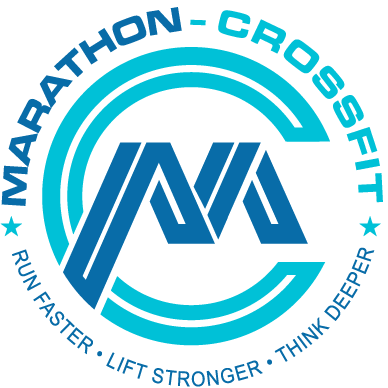Rogue Squat bar vs Ohio power bar
This is a comparison of the Rogue Squat bar and the Ohio power bar including pros, cons, and alternatives. Follow the links for more details
Overview and Review of the Rogue Ohio Power bar
This overview of the Ohio power bar was originally published in my comprehensive guide on which Rogue barbell to buy. If you are currently considering to buy a Rogue barbell it is worth a read to get input on the latest models. I update the guide on a yearly basis depending on Rogue's new releases.
Price: 325$/425$
Related articles
- Which belt to buy from Rogue
- Which barbell to buy from Rogue
- Which rack to buy from Rogue over $1000
- Which rack to buy from Rogue for under $1000
- Which plates to buy from Rogue
- Which strength equipment to buy from Rogue
- Which conditioning equipment to buy from Rogue
- Which Equipment package to buy from Rogue
- Which accessory to get from Rogue
- Which jump rope to get from Rogue
- Which bench to get from Rogue
- Which dumbbell to get from Rogue
- Which knee sleeve to get from Rogue
Overview of the Rogue Ohio Power bar
The rogue Ohio power bar is one of the IPF approved barbells from rogue. To be used in competitions barbells have been tested and approved by the association you want to compete in. The IPF is one of the most respected and well-known federations in the world. This means that you can simulate powerlifting competition standards in your own gym. If you are a powerlifting gym intending to hold a competition at a national or international you should have at least one IPF approved barbell. Three might be even better depending on how many athletes are invited.
The Rogue Ohio Power bar comes in two versions. One in Zinc and the other in stainless steel. The zinc version withstands 200K PSI tensile strength while the other withstands 205K tensile strength. The bar weighs 20kg and has a diameter of 29mm. The loadable sleeve length is 16.875. The sleeves are attached to the shaft with bushing. The Ohio power bar has no whip and aggressive knurling.
The Ohio power bar is described as one of the best options for powerlifting on a budget. The 325$ option brings it very close to the bread and butter Ohio bar. If you don't want any intricate designs and you are focused on powerlifting, this is the bar to get. You might want to toss up between the westside barbell and the Ohio bar. If you compare like for like (in this case zinc for zinc) you get a stiffer bar with less aggressive knurling from the westside barbell and a less stiff barbell with more aggressive knurling with the Ohio power bar.
Pros of the Ohio power bar
The Rogue Ohio power bar is a good value for money bar for someone who wants to start a home gym with powerlifting focus. If you can spare a couple of extra dollars compared to the Ohio bar it will be worth your while. The other options to consider are the deadlift bar, thor bar and westside bar if you do not care that much for overhead lifts.
Cons of the Ohio power bar
The Rogue Ohio power bar has not been designed to be dropped continuously from overhead. While you can do it the lack of whip will show more wear and tear on the bushing and the bar itself. It will also behave suboptimally during clean and jerks and snatches if the main focus of your training or gym is weightlifting. If you want to invest while on a budget into a solid weightlifting barbell goes for the training bar instead.
Conclusion
If you are focused on powerlifting and do not want to pay for a Rogue westside or Thor barbell, the rogue Ohio power bar is the way to go.
Overview and review of the squat bar
The Rogue squat bar is a 32mm long sleeved version of Rogue bars to maximize what you can squat. Here are the pros and cons.
The Rogue squat bar is a special design that focuses on squatting at $445. The main differences to regular bars are
-
Bigger circumference 32mm
-
Longer shaft
-
Fully knurled
-
Longer sleeves
This makes it a bar that is aimed at big, heavy squatters. It could also be interesting for some deadlift experiments as the elephant bar from the Arnold has not gone into mass production yet. The specifications of the bar are:
-
Made in the USA
-
Weight: 25 KG
-
Diameter: 32mm
-
Stainless Steel Shaft - 200,000 PSI
-
Aggressive Knurl Pattern along full length of shaft + powerlifting and center knurl marks
-
Bar Length: 94.488
-
Distance Between Sleeves: 56"
-
Loadable Sleeve Length: 16.795"
-
Chrome Sleeves
-
Bronze Bushings
Pros of the squat bar
The pros of the squat bar compared to other bars are in the name. The design features are inbuilt to maximize big squats.
-
Longer sleeves
-
Longer shaft
-
Full knurling
-
32mm
Longer sleeves will enable you to put more weight on the bar with rubber or steel plates. If you see Ray Williams squatting you can get an idea of why he might run out of space on the sleeves.
32mm stainless steel will keep the whip at bay. While you want whip in an Olympic barbell to make use of momentum to get the bar overhead, it is not a desirable feature in a squat bar. You want to minimize 1000 pounds taking a life on their own on your back.
The full knurling will provide more grip to your back. There are other bars out there with center knurls which does almost the same thing for you.
The longer shaft will make it less like for you to bump into the rack when oh are walking out very heavy weights. Depending on your setup this can be annoying. I injured myself twice because of twisting my upper body when walking out of a setup and touching off the j cups.
Cons of the squat bar
-
No IPF / IWF approval
-
Space requirements
-
Limited use
-
Price
If you are considering the squat bar because you want to break records, keep in mind that it is not approved for the IPF or IWF. You will still earn respect for posting the first 500kg raw squat, which this bar is basically built for, but it won’t count in these federations.
If you are setting up your home gym in a very crammed place, keep in mind that this bar will protrude even further to the sides. If you have already cut it very thing with the distance of your bar to the wall or another rack, the squat bar might just push it over the edge.
The squat bar is mainly limited to squats. As it has bushing and knurling all across the bar it might not be the best option for Olympic lifts, the bench press, and deadlifts.
For the price you are looking at you can get more versatile barbells for your home gym with a cooler design. If you are setting up your home gym the squat bar might not be the go-to option.
Alternatives to the squat bar
Alternatives to the squat bar are
The Rogue Chan bar is a good alternative for mere mortals who don’t squat 400kg. It is cheaper than the squat bar, has a poppier design and can also be used for Oly lifts. If I was to spend $400 on a starter barbell for my home gym it would be this one.
The duffalo bar is an interesting bar for people who squat 800 pounds plus on a regular basis. This bar has been invented at Kabuki strength which is headed by Chris Duffin. The design is aimed at relieving stress on the shoulder while bench pressing and squatting. This is a very interesting second bar to buy instead of the squat bar, even though it costs $200 more.
Summary for the squat bar
The squat bar is a great bar for someone who actually needs it. This would be people who squat more than 300kg on a regular basis. There are not that many of them around. I personally think for a second barbell in your home gym you are better off going with safety or duffalo bar.vs Squat bar

